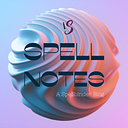Winter 2024 — Nonfiction
On the night before my first driving test, I dreamt that I reversed over my dog and killed him. His body broke into separate parts, all linked by springs which coiled back and forth like metal tentacles. In the dream, I knelt over him, the engine still running, and tried to grasp the spring that attached his head to his body, but it kept slipping out of my hands.
I failed the test, not because of the dream, but because I hit the pavement ten times trying to parallel park.
In Crash Test Dummy, Rose Mason delivers the universal anxiety of driving and thrusts with a tone so frank and forthright that the emotional dreamscape of subconsciousness and the clinical morbidity of facts merge together, inviting the reader along the inner-most routes of the narrators mind only to confront them with critical questions about male-oriented road safety that leaves the female driver and passenger inherently in danger.
Mason’s use of dreams allows the narrator to drag complex, hidden emotions into a harsh light. Mason’s dreams corrupt the innocence of dogs and little brothers, unveiling an inherent evil in road safety that cannot be ignored. The reader, while shocked by the violence of the dreams, is grateful for them: Mason’s honesty reveals that dreams really are doorways into our most hidden fears and desires, Mason using the narrative power of the subconscious to enrich her feminist themes, sacrificing the innocence of the dog in order to get to the bottom of women’s driving anxiety and their inherent lack of safety.
This honesty is retained in Mason’s almost clinical approach to describing accidents and death, allowing the narrator to truly investigate driving anxiety in a way that suggests the personal experience is simultaneously a societal concern. Herein lies Mason’s feminist undertone: she ensures that the personal is political. But this critical attitude does not deem Crash Test Dummy a didactic or formulaic read that is devoid of personality and emotion. Mason uses personal anecdotes to retain not only her own connection to the narrative, but also the reader’s connection.
In validating the emotions of driving anxiety, Mason critically challenges the mainstream methodologies of car safety, demanding her readers to ask the question: are cars inherently more dangerous for women as safety procedures are not designed for them? This question is haunting in how much it affects our daily lives. The fact of it is chilling; Mason dissects the prospect of a woman in a car crash all too clearly: “When she splits, she splits wide open. Blonde and glass, tarmac and flesh, metal and paws.”
Bruna Gomes, Fiction Editor
This blog post, along with many others, is also available to read on the Spellnotes section of our website.
If you don’t follow us on social media already, you can find links to all of our social media channels at this link.
You can also listen to our seasonal issue inspired playlists on our Spotify channel.
If you would like to read/ see this work in full, you can subscribe here. Our magazine is available in PDF and paperback format. Click here to find out more.
Photo by Pixabay on Pexels.
